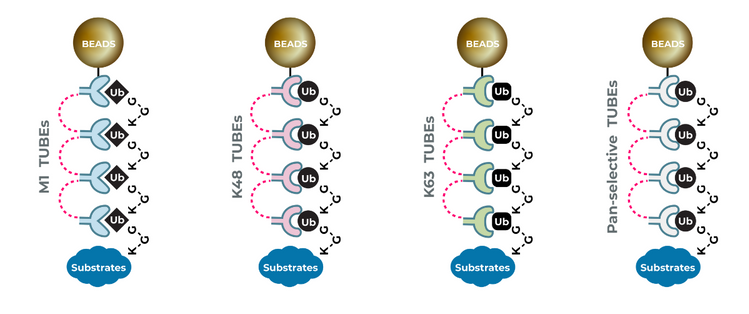PROTACs & Molecular Glues
PROTACs (Proteolysis-targeting chimeric molecules) artificially hijack the components of the UPS to degrade a target protein. PROTAC drugs are hetero-bifunctional small molecules that contain two functional ligands connected via a linker; one ligand binds to a target protein and the other ligand binds to an E3 ligase.

E3 Ubiquitin Ligases Profiling & Screening
At LifeSensors, we have developed reagents and assays encompassing both traditional and non-traditional approaches for E3 ligase screening and profiling. LifeSensors’ small molecule library contains a collection of ligase-centric compounds, which can be employed as a gold standard for your ligase drug discovery efforts.

Mass Spectrometry Proteomics

SUMO-Tag Protein Expression & Purification

DUB Assays, Screening & Profiling

Tools to Isolate, Culture, and Assay Cells
Featured Products
Find Products By
Featured Resources
Stay informed with our latest announcements, breakthroughs, and corporate updates straight from LifeSensors.
Dive into our expert-written blogs and peer-reviewed publications covering PROTACs, SUMOylation, and cutting-edge biotech research.
Learning Center
Press, publications & blogs
The PA950 and PA770 are important assays for studying ubiquitination due to an E3 ligase...
By: Derrick Padykula and Isabelle Wentzel Hallmark of Neurodegeneration Diving into the complex world of...
By: Derrick Padykula Ubiquitination, a ubiquitous cellular process, involves attaching ubiquitin to target proteins, influencing...
MALVERN, Pa., October 26, 2023 — LifeSensors, Inc., a leading innovator in protein degradation technologies,...
FAQS
1. What are the different types of pan-TUBEs LifeSensors sells?
LifeSensors’ TUBE (Tandem Ubiquitin Binding Entity) technologies are industry-leading tools to detect and enrich/purify poly-ubiquitylated proteins from cell lines, tissues, and organs. LifeSensors has two commercially available pan-selective TUBEs (TUBE1 and TUBE2). Both TUBE1 and TUBE2 come in various flavors such that they can be used for far-Western detection (FLAG, Biotin), enrichment/purification (linked to Agarose and Magnetic beads), and in vivo imaging (TAMRA, FITC-attached) applications. For more information, please see our TUBEs page. TUBE1 slightly prefers lysine 63 over lysine 48, while TUBE2 prefers them equally. Despite this minor difference both TUBEs are designed for pan-selective pulldowns and can be used with a variety of applications.
2. What is the advantage of using the SUMO system?
Many engineered/designer proteins or single-chain antibodies are poorly expressed. Fusion with SUMO/SUMOstar enhances the stability, solubility, and yield of a protein. SUMO is one of the most conserved proteins in eukaryotes and have been shown to post-translationally modify a number of proteins in cells. SUMOylation plays an important role in various cellular process such as nuclear-cytosolic transport, transcriptional regulation, and protein stability. SUMO/SUMOstar-fusion leads to a dramatic enhancement of expression in E. coli, yeast, insect, and mammalian cells and promotes correct folding and hence biological activity. Additionally, this system simplifies and lowers the costs associated with protein expression and purification. Using this technology, a plethora of proteins have been shown to enhance their expression, stability, and yield. More information is available on our SUMO pages
3. LifeSensors has a leading antibody for Ubiquitin where is it?
LifeSensors leading antibody, VU-1 is catalog number VU101 and is available in two different sizes, 50µg and 250µg. This antibody is designed for use with glutaraldehyde. Comparative antibody metrics is available on the VU101 product page and also can be purchased in an HRP conjugation as well. We recommend this antibody over other anti-ubiquitin antibodies such as FK2 as we use this antibody in our own developmental work.




